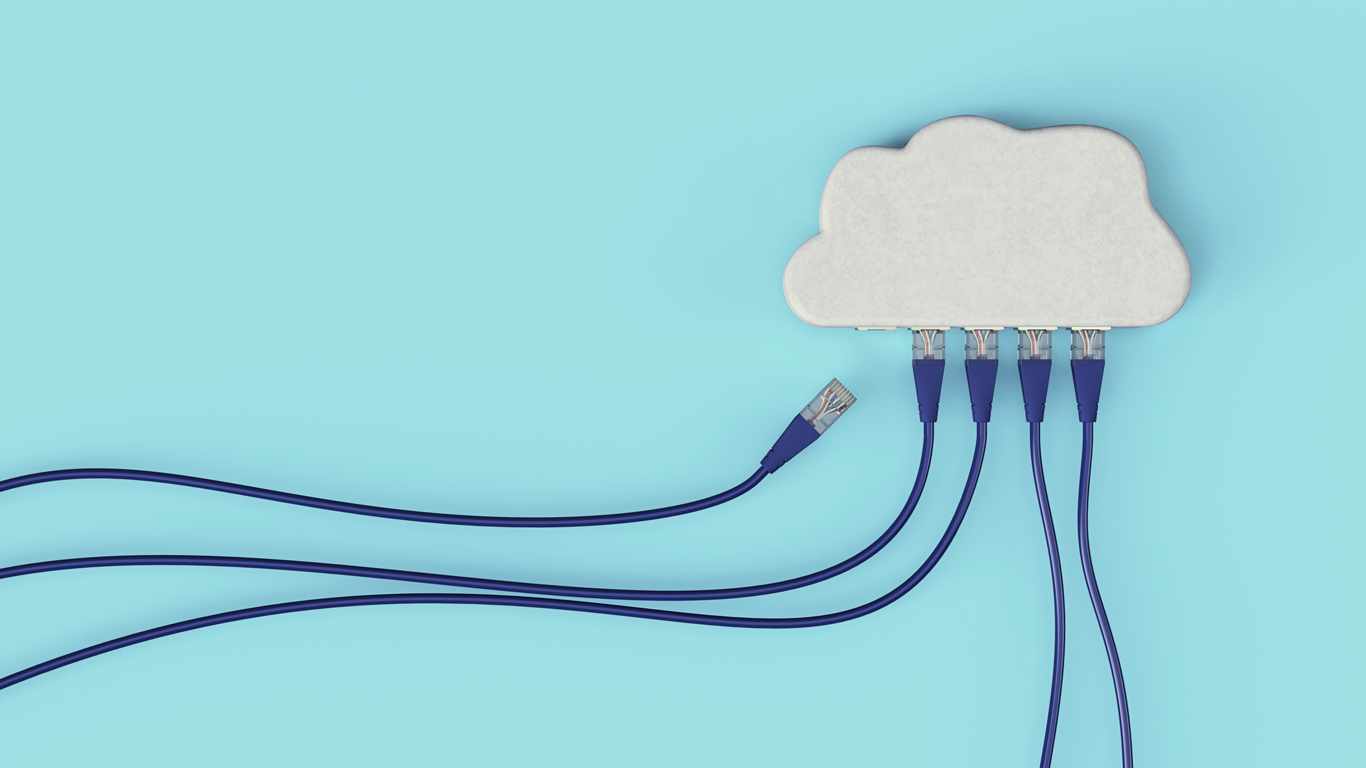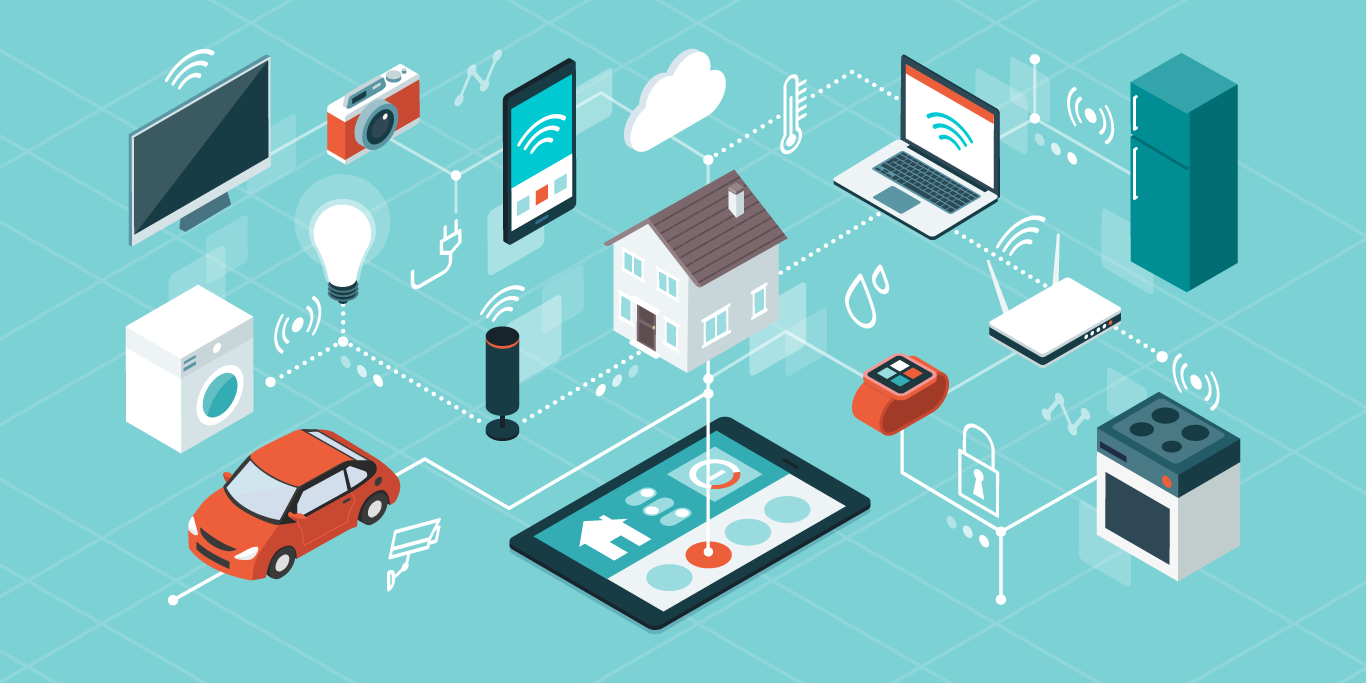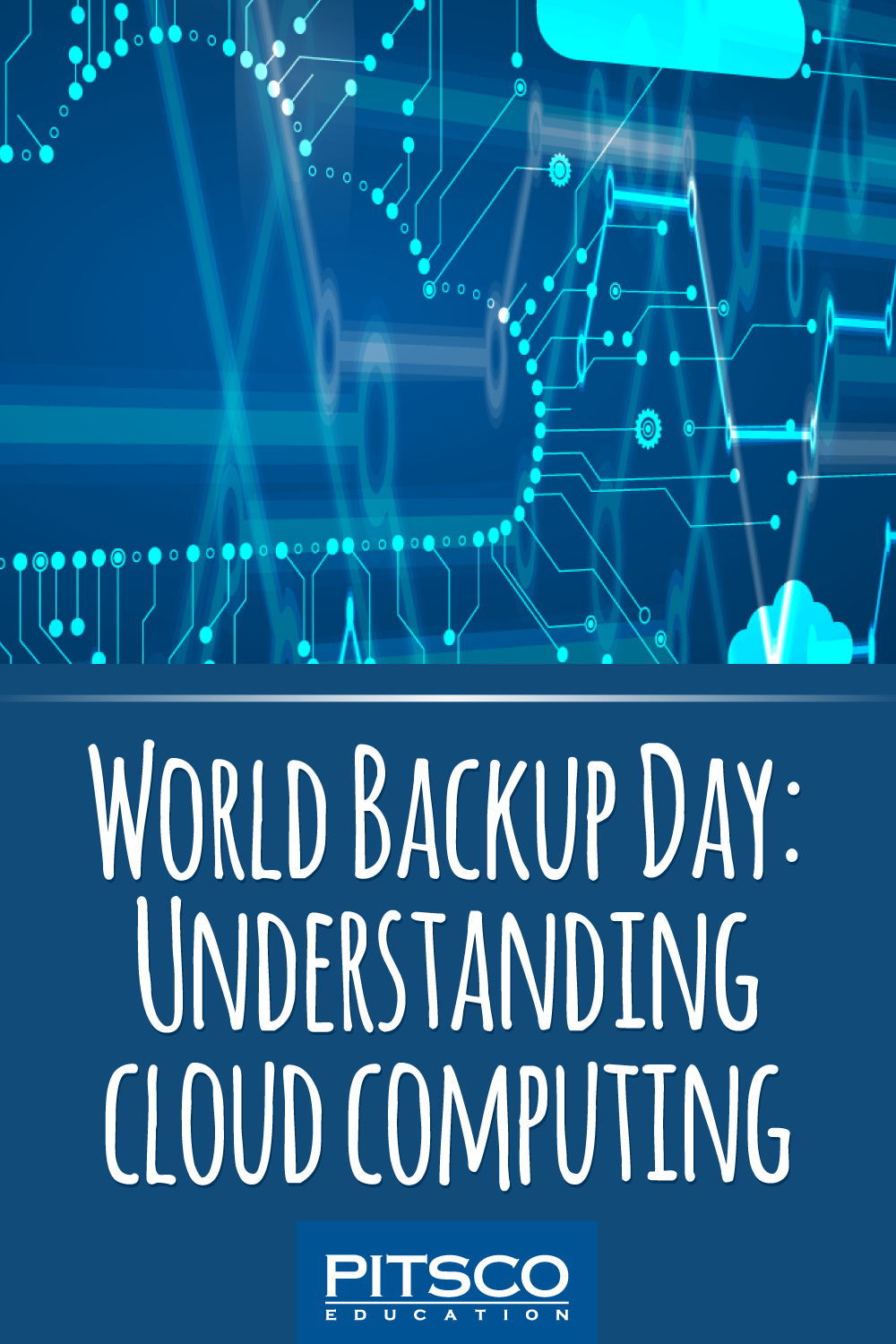Updated 5/24/24
At the beginning of April, we celebrate April Fools’ Day, but, on March 31, there’s a little-known holiday called World Backup Day. It’s a good reminder to back up your computer before any pranksters accidentally destroy your data or – even worse – your computer!
I’m familiar with losing all my data on my personal computer. Luckily for me, it wasn’t due to a jokester but a hardware failure. My hard drive died. I thought to myself, “No worries, everything is saved in the cloud,” which was mostly true. I would still recommend doing system backups for all your user settings, but, luckily, most of my documents and images were stored on my Google Drive in the cloud.
It left me wondering what actually is the cloud? In my mind, I’ve always pictured a cloud over our heads full of binary code: ones and zeros. But, surely that’s not the case. So, let’s dive into the details of a common phrase in today’s society: the cloud – and a kit that’s perfect to get students in know about this technology.
What Is the Cloud?
The cloud, or cloud computing, refers to the digitization of servers across the world. You’ve probably heard how the first computer took up an entire room. As computers became smaller and more powerful, they then required servers and networks to help support them. Schools and businesses were required to host on-premises servers to support their organization’s need. However, investing and maintaining servers could be quite expensive. Networks required enough memory or data storage for peak usage times to avoid slowdowns or network errors. This meant that during non-peak times, much of the server’s capacity was left unused, which led computer scientists to look for a more efficient process.
 A technology called virtualization stepped in to provide more efficient computing. Virtualization allows for simulated or digital-only virtual machines. The virtual machines act like regular computers but without the hardware – instead they operate on servers. Today, servers are just a little bigger than a file cabinet and can be grouped together, sometimes taking up entire rooms or even buildings. These server groupings make up data centers across the globe to support the cloud network. Organizations access the cloud and the servers that host software and databases via the Internet.
A technology called virtualization stepped in to provide more efficient computing. Virtualization allows for simulated or digital-only virtual machines. The virtual machines act like regular computers but without the hardware – instead they operate on servers. Today, servers are just a little bigger than a file cabinet and can be grouped together, sometimes taking up entire rooms or even buildings. These server groupings make up data centers across the globe to support the cloud network. Organizations access the cloud and the servers that host software and databases via the Internet.
Benefits of the Cloud
When you use the cloud, you don’t have to manage physical servers or run software on your own physical computer. This enables you to access the software or files from almost any device with an Internet connection. If you get a new phone, you’ll still be able to access your Instagram account and its content because the Instagram application stores your pictures, posts, and comments (data) in the cloud.
The cloud also allows your computer or phone to use memory more effectively. Devices have a finite amount of physical memory; each device has only so much memory built into it. This memory is used to run your operating system, run applications, and store data among other things. When you store files in the cloud or access applications such as Microsoft Office 365 via the cloud, you are storing less data on your computer.
 Another benefit of the cloud is increased collaboration. Because files can be accessed from anywhere, it’s easier to work on a document together with a friend, even in real time. This increased collaboration breaks down physical distance, bringing people together across the world. For example, cloud computing technology has allowed for cloud gaming. One popular cloud game is Among Us, which has low performance requirements and can bring players together from across the world.
Another benefit of the cloud is increased collaboration. Because files can be accessed from anywhere, it’s easier to work on a document together with a friend, even in real time. This increased collaboration breaks down physical distance, bringing people together across the world. For example, cloud computing technology has allowed for cloud gaming. One popular cloud game is Among Us, which has low performance requirements and can bring players together from across the world.
The Internet of Things
A new prominent technology that is powered by cloud computing is the Internet of Things, or IoT. The IoT is a big concept and it’s hard to pinpoint an exact definition. I like to think of IoT as network-connected devices that are used in the physical environment to improve a process or activity.
 We use IoT devices daily: smart doorbell cameras, voice-activated home AI smart speakers, and even thermostats you control with your smartphone. I typically think of IoT devices working with sensors or inputs to make my life a little easier. However, IoT devices aren’t just for personal use – they are used in industries such as manufacturing and agriculture and more. These sensors and inputs require a large amount of computer processing and data storage. That’s where cloud computing comes into play. Using the virtual machines in the cloud, small sensors can process, analyze, and store a lot of data to provide to the user. IoT devices will continue to feature prominently in our daily lives.
We use IoT devices daily: smart doorbell cameras, voice-activated home AI smart speakers, and even thermostats you control with your smartphone. I typically think of IoT devices working with sensors or inputs to make my life a little easier. However, IoT devices aren’t just for personal use – they are used in industries such as manufacturing and agriculture and more. These sensors and inputs require a large amount of computer processing and data storage. That’s where cloud computing comes into play. Using the virtual machines in the cloud, small sensors can process, analyze, and store a lot of data to provide to the user. IoT devices will continue to feature prominently in our daily lives.
So, now I know the cloud isn’t really a cloud with ones and zeros floating above our heads. It’s more likely those ones and zeros are traveling through network cables or fiber-optic cables of the Internet around the world. One thing is for sure: the cloud, cloud computing, and the Internet of Things are technological advancements that have changed the way we operate in our daily lives. I, for one, am so thankful that all my documents are backed up in the cloud.
Check out the Arduino Explore IoT Kit Rev 2. It’s a great hands-on project with online curriculum included for high school and college students included. Students learn how to build Internet-connected objects, and about sensors, automations, protocols, and more. Watch how White Mountains Regional High School Used IoT to Build an Automated Greenhouse.
Don’t forget to take part in World Backup Day on March 31 to protect your precious digital documents so you don’t become a fool on April Fools’ Day! Comment with any tips or experiences you have.
MORE RESOURCES:

TOPICS: BEYOND THE CLASSROOM, Teacher Resources, Culture, Technology, Trends, Resources, Engineering, Coding, Workforce Development




